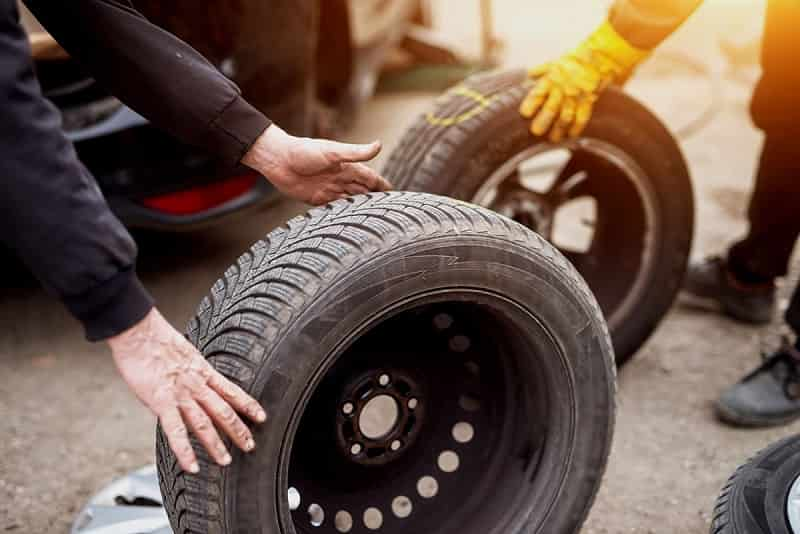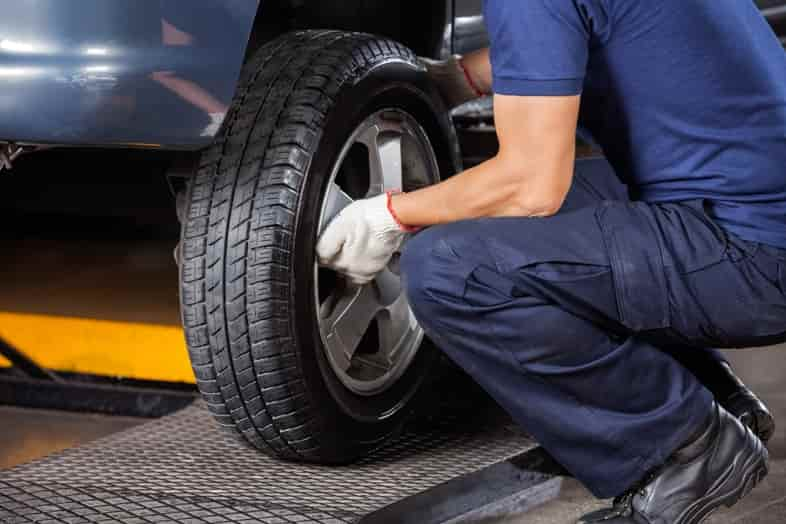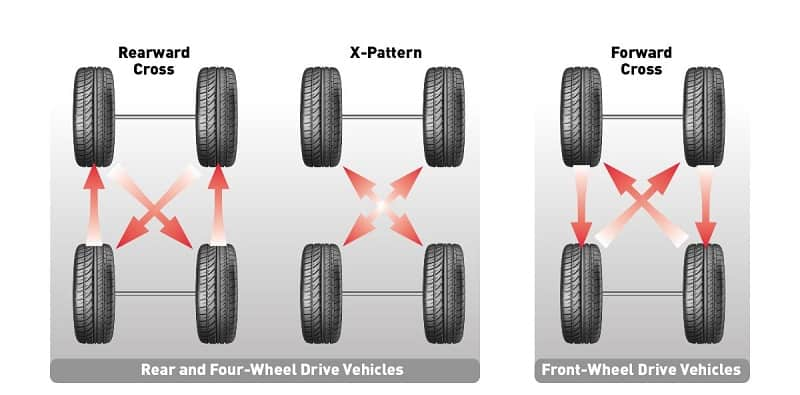As you know, your tires will wear out after a period of use. However, due to many different factors acting on the wheels, the wear of the tires is no longer uniform, which can make the car run out of balance and make it harder to steer. Therefore, to ensure that the vehicle operates normally again, it is extremely necessary to rotate the tires.
Let's find out which are the contexts that lend themselves to this action and what happens if you don't rotate your tires?

What happens if you don't rotate your tires?
Contents
- What is Tire Rotation?
- What Happens If You Don’t Rotate Your Tires?
- What are the benefits of tire rotation?
- How often should the tire be rotated?
- Does the tire warranty affect the tire rotation schedule?
- Can I do my own tire rotation at home?
- Do I need to check the tire pressure when rotating the tires?
- What types of tire rotation are there?
- Conclusion
What is Tire Rotation?
Tire rotation is one of the maintenance techniques to overcome the situation when 4 tires wear unevenly by regularly changing the positions between the front-rear, left-right tires together. In other words, tire rotation is also transferring tires from one position to another in the same vehicle.
Proper tire rotation will help the car reduce the uneven wear of 4 tires. Thereby helping to increase tire life, improve driving safety and save up to 3% on fuel costs when operating the vehicle.
What Happens If You Don’t Rotate Your Tires?
If you don't rotate your tires periodically, there can be a number of consequences such as:
- Short tire life: Instead of wearing evenly on the tire surface, when you do not rotate the tire, the wear of the tire is only concentrated in certain areas, the tread is worn quickly, the tire life is reduced.
- Tires wear unevenly due to many reasons such as the weight of the axle, the position of the tires.
- The brake does not produce the same good effect as the original, may cause danger to the driver.
- Unable to guarantee the grip of the tire when cornering, or moving in the rain, slippery road conditions.
- The right tires often wear more than the left tires because of collisions with the sidewalk when parking or stopping.
What are the benefits of tire rotation?
Is tire rotation necessary? The question confused many drivers. Many people still think that all four tires when in contact with the road will wear the same over time. But the reality is not like that. Because cars have front or rear-wheel drive, or 4-wheel drive, leading to different tire wear.
The front and rear tires perform different functions on a vehicle: the front tires drive and load more than the rear when turning; The front tires transmit engine power in front-wheel drive cars, while the rear wheels transmit power in rear-wheel drive cars. Due to these and other factors, front and rear tires wear out at different rates. For the longest tire life, it is best to rotate the tires from front to back, which eliminates wear and ensures the longest possible life of a set of tires. It's also one of the easiest and cost-effective maintenance jobs you can do.
Uniform wear will give all four tires uniform traction and handling, which improves cornering performance and ensures driver safety.

How often should the tire be rotated?
As a general rule, we recommend rotate your tires every 5000 to 7000 miles. This will vary based on your driving style and mileage. Off-road driving, using performance tires or above-average mileage will require more frequent tire rotation.
Another suggestion is to rotate your tires every time you change the oil. Most modern cars have an oil change interval of about 5000 miles. This makes it easy to remember and allows you to schedule two service jobs at once.
Does the tire warranty affect the tire rotation schedule?
An exception to the general mileage suggestions given above would be in the case where a new set of 4 tires has been installed. We recommend that you pay careful attention to the warranty information provided by the tire manufacturer or dealer.
With new sets of tires, most will have maintenance regimens, and it is recommended that you follow the required tire rotation schedule and that you take the vehicle to the dealer from which you purchased the tires rotation.
Can I do my own tire rotation at home?
Tire rotation is an easy DIY job. However, you will need some special tools, including at least two and in some cases four racks, and a jack. Your best bet is to have a torque wrench (weigher) to re-tighten the lug nuts or bolts to the correct tightness. The simple answer is that you can, but you must have the necessary tools.
In case you don't have the tools, or simply don't want to do it. Take the car to the dealer, service workshop to do this job quickly. Furthermore, during tire rotation, you can request additional items of suspension check, brake pad maintenance, wheel grease, wheel alignment.
Do I need to check the tire pressure when rotating the tires?
Regardless, we recommend checking your tire pressure at least once a month. If you drive more than usual, check more. And of course, when you rotate your tires, it's simple and necessary to check your tire pressure.
However, there is a more important reason to check the pressure when rotating tires. Many cars today require different front and rear pressures. For example, if your tire pressure label says “30 PSI front” and “34 PSI rear”, and the pressure is not reset, all 4 tires will have incorrect pressure after turning! So check and adjust the pressure every time you rotate the tires.

What happens if you don't rotate your tires?
What types of tire rotation are there?
1. Rearward cross
For 4-wheel drive, all-wheel drive or rear-wheel drive cars, the rearward cross-type is recommended. The rear tire is moved to the front axle and held on the same side of the vehicle while the front tire is moved to opposite sides of the rear axle.
2. X - Pattern
Recommended for front-wheel drive vehicles such as light trucks and sedans, all tires are diagonally moved, meaning the tires are shifted from one axle to the other as well as positioned. from one axis to the other.
3. Forward cross
This is the most common model for front-wheel drive vehicles. The front axle tire is shifted straight to the rear while the rear tire is shifted up diagonally to the opposite side of the front axle.
Conclusion
Tire rotation is one of the simplest maintenance activities but contributes greatly to prolonging tire life and improving vehicle safety. A set of evenly worn tires will last longer than a set of unevenly worn tires.
However, if the condition of the tire is too worn, you should replace it with a new tire to ensure safety when operating otherwise it will be extremely dangerous to intentionally go with unevenly worn tires.
I’m Ivo Gievski, the content writer for Tireer. We built our website with over 15 years of experience and extensive research in the automotive and technology sectors. My dedication to delivering high-quality content is unwavering, and I strive to continuously hone my skills to stay ahead of industry trends and provide readers with informative, engaging, and valuable insights.